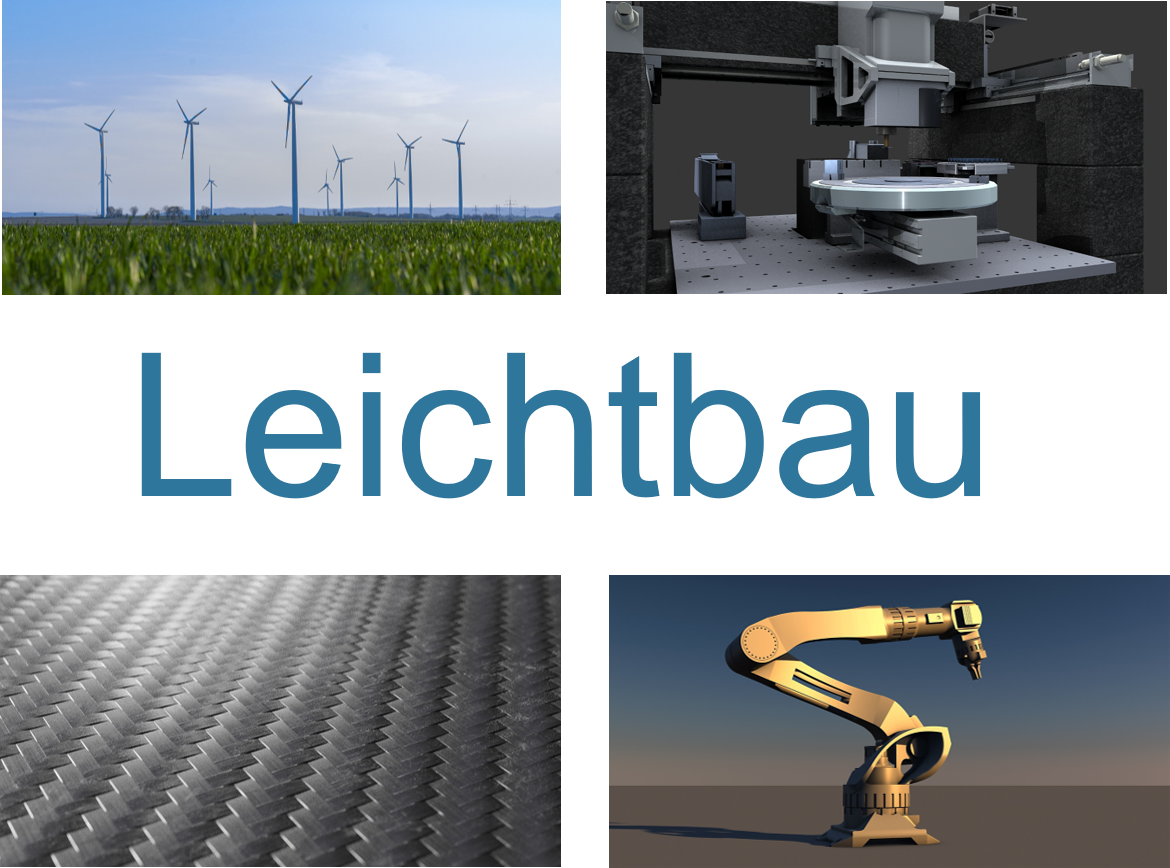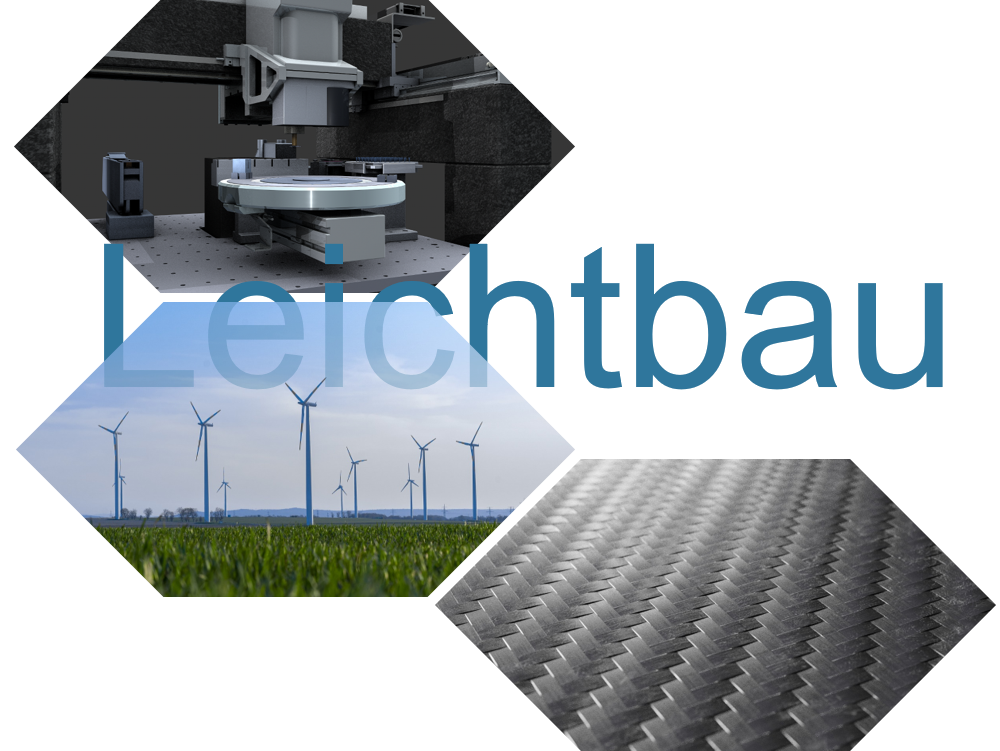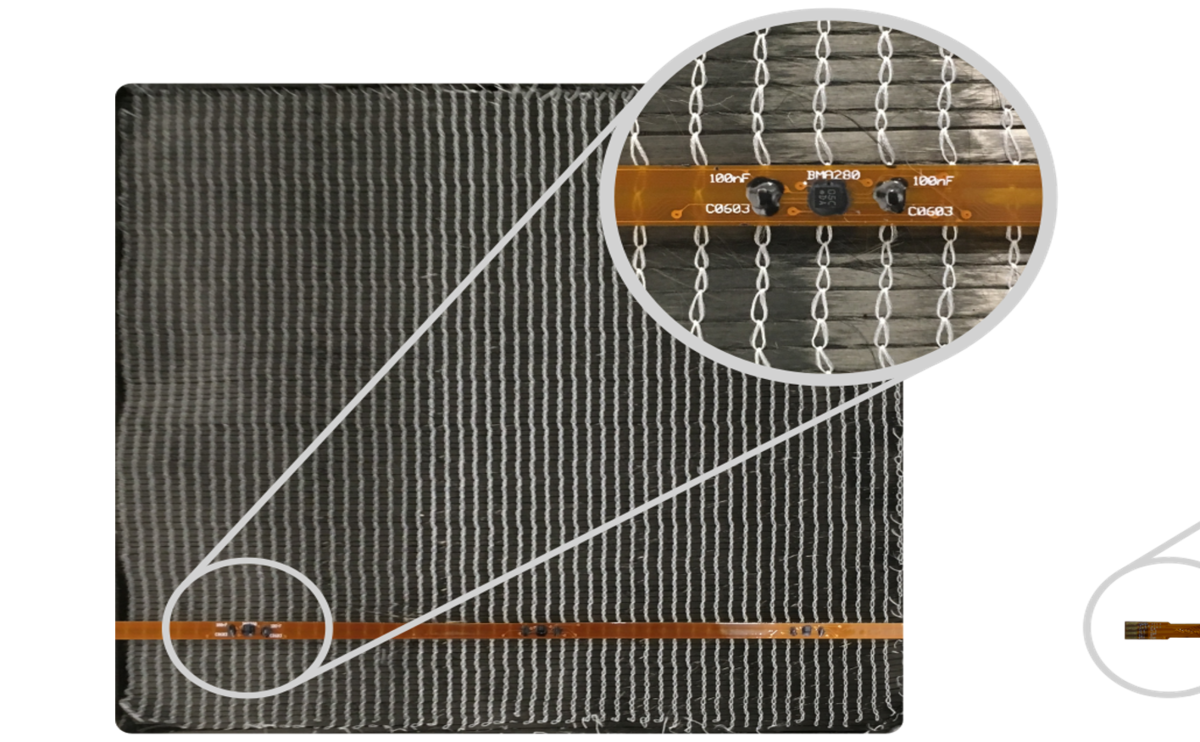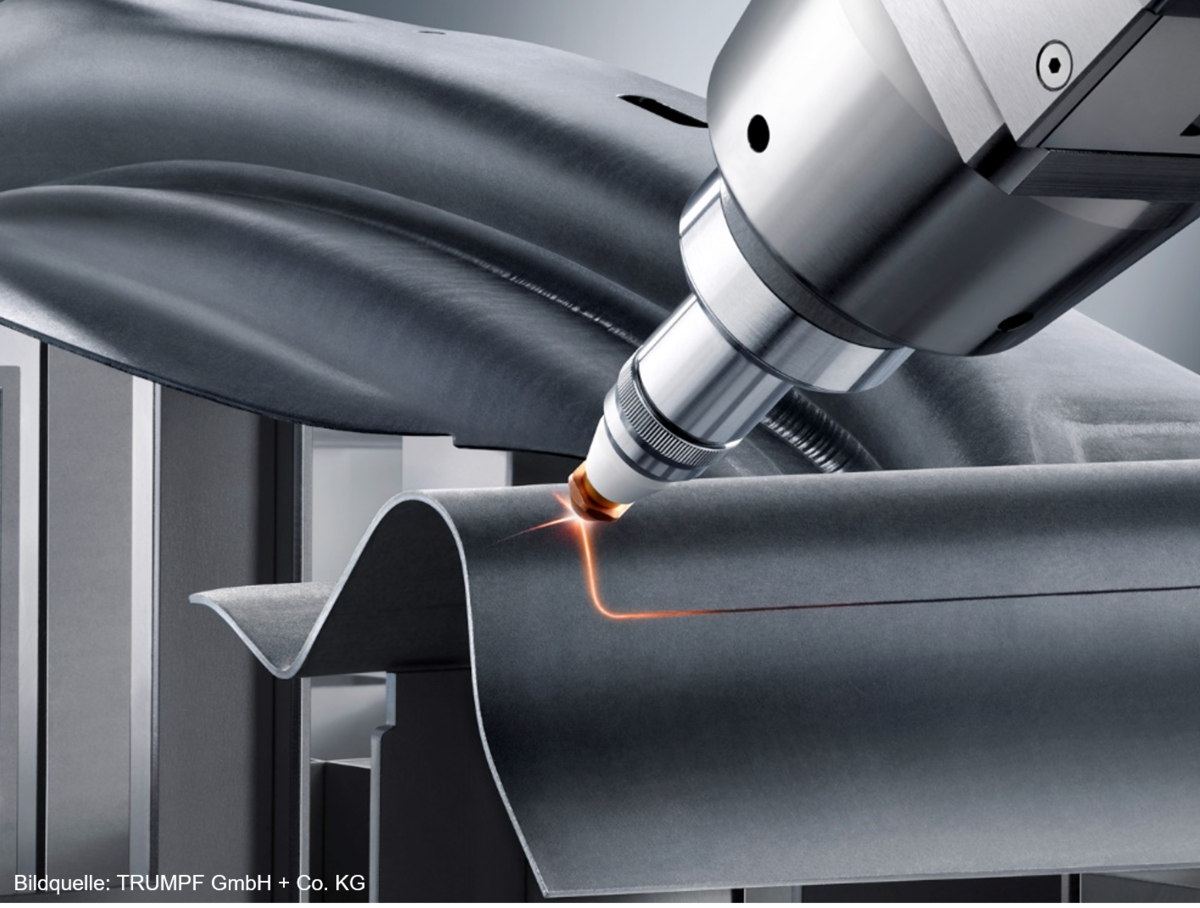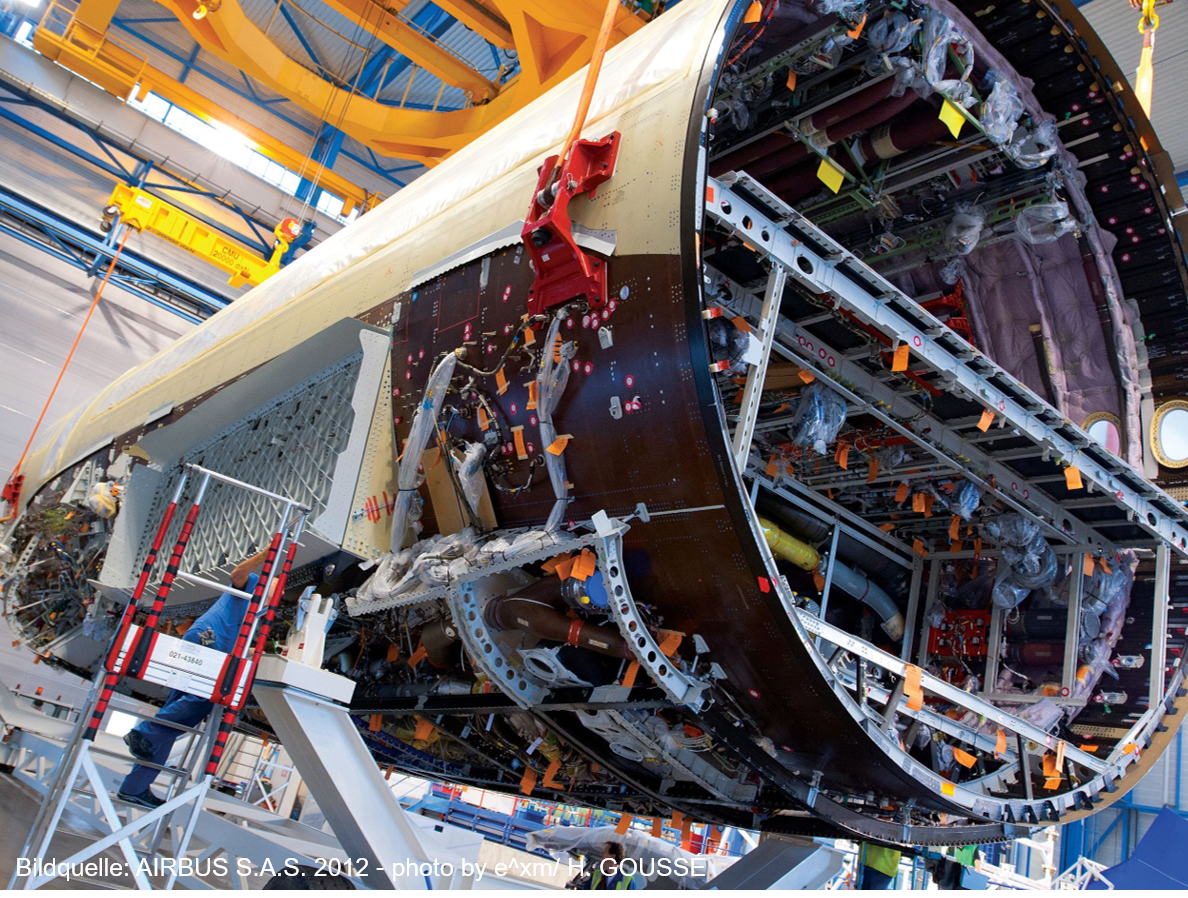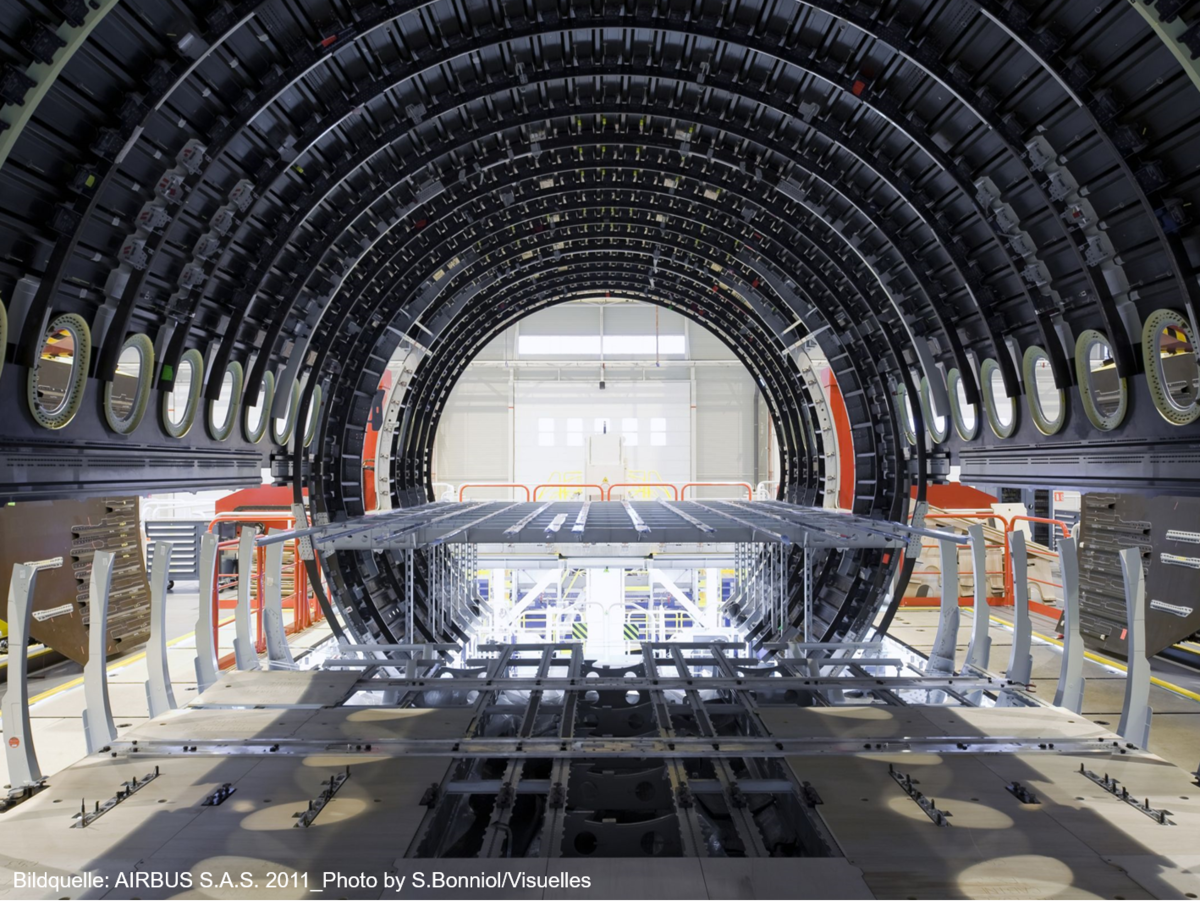Research at the Chair of Lightweight Design
Lightweight design is an interdisciplinary science at the interface of mechanics, materials science, manufacturing processes and mechatronics, which is concerned with the development of resource-optimal structures. In this context, research at the limits of what is technically feasible also includes functional integration and thus actuator and sensor materials. Lightweight construction research is also driven by the need for a sustainable use of resources. Our research contributes to the development of new sustainable, resource-saving technologies.
Modeling and analysis of functional and failure mechanisms
Research at the Chair is concerned with new adaptive components and material systems for the lightweight structures of the future. The focus is on fiber-reinforced plastics as well as other composite materials. Computational methods and experimental observations are combined in order to understand the corresponding functional and failure mechanisms in detail through modeling and analysis.
For the research on new lightweight construction technologies, three complementary aspects need to be covered:
- Computational methods: Analysis of adaptive and active materials and structures; Stability analysis of composite structures; Material and failure models for new material systems; Computational analysis of adaptive and active lightweight structures
- New material systems: New concepts for composite materials; adaptive and active material systems; self-healing of lightweight materials; functional integration
- Design principles: Transfer of new technologies into specific lightweight structures; application of new design concepts; structural optimization with adaptive and active material systems

